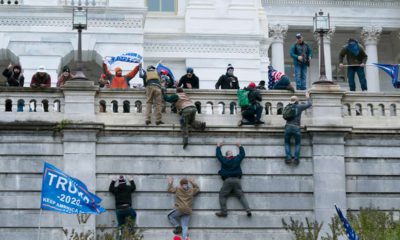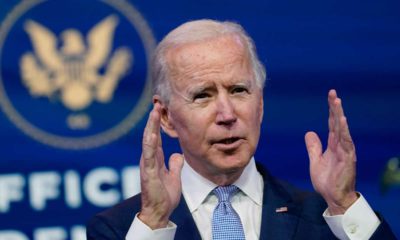Published
5 years agoon
By
AP News
BEIJING — Chinese health officials expressed new optimism Thursday over a deadly virus outbreak while authorities in South Korea’s fourth-largest city urged residents to hunker down as fears nagged communities far from the illness’ epicenter.
The confidence voiced by China’s government came as it reported a reduced number of new infections. But doubts remained about the true trajectory of the epidemic as China again changed its method of counting and new threats emerged outside the country.

People wear masks as they commute during the morning rush hour Thursday, Feb. 20, 2020, in Chuo district in Tokyo. (AP/Kiichiro Sato)
The flare-up came more than 900 miles from COVID-19’s epicenter across the Yellow Sea in China’s Hubei province and its capital of Wuhan, a sign of the risks the virus potentially poses to communities across the region and beyond.
“Everything that is not known about this is causing concern,” said Dr. David Heymann, a professor of infectious disease epidemiology at the London School of Hygiene and Tropical Medicine.
Though all but about 1,000 of more than 75,000 reported cases of COVID-19 have been recorded in China, scattered cases have erupted elsewhere.

People suspected of being infected with the new coronavirus wait to receive tests at a medical center in Daegu, South Korea, Thursday, Feb. 20, 2020. (Lee Moo-ryul/Newsis via AP)
But those statistics came after yet another change in how cases are counted.
Last week, China’s National Health Commission said officials in Hubei would record new infections without waiting for laboratory test results, relying instead on doctors’ diagnoses and lung imaging. On Thursday, though, it returned to its prior way of counting, a decision sure to aggravate observers who say consistency is key to understanding COVID-19’s path.
The health commission said it was reducing its count of infections by 279 after lab tests found they had wrongly been included in the tally.
Cities in Hubei with a combined population of more than 60 million have been under lockdown since the Lunar New Year holiday. Authorities halted nearly all transportation and movement except for quarantine efforts, medical care, and delivery of food and basic necessities. “Wartime” measures were implemented in some places, with residents prevented from even leaving their apartments.
The stringent moves have followed public fury over Hubei authorities’ handling of the outbreak at its outset. The risk of human-to-human transmission was played down and doctors who tried to warn the public were reprimanded by police. Wuhan residents reported overcrowding in hospitals and futile attempts to seek treatment.
Many countries have also set up border screenings and airlines have canceled flights to and from China to prevent further spread of the disease, which has been detected in about two dozen countries.
[rlic_related_post_two]


Tulare County Gang Member, Two Fresnans Head to Federal Prison


California Pins Vaccine Hopes on Biden Administration


Capitol Photos, Videos Lead to California Doctor’s Arrest


Vaccine Chaos: Californians Scramble for Shots Amid Mixed Messaging


AP-NORC Poll: Virus, Economy Swamp Other Priorities for US


Pompeo Says China’s Policies on Muslims Amount to ‘Genocide’




